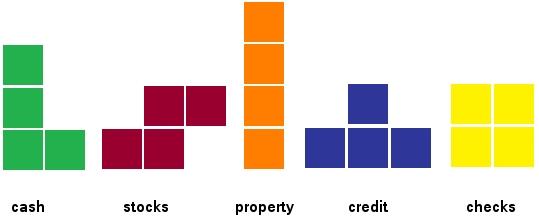|
emotional and/or psychological response, but it tends to end there. In a sense, the audience is pointless. For the content, once produced, is stone. On the contrary, a video game without a user is plotless, stand still, null void. For here the consumer is also a producer. And as heavily programmed as they might be, video games exist as participatory based media. With new media the tree falling in the forest only makes a sound if there is someone present to hear it.
But enough of the oversights. We have included this section to illustrate pile theorem through common and visual grounds (video games), in particular the games known as Tetris and Katamari. The basic analogy to follow here is this: Tetris = stacks; Katamari = piles. (note: the reader unfamiliar with either or both of the games under examination need not worry).
|
tetris (stacks)
If not for being the single most popular, as well as enduring, product of the arcade scene – Tetris may be revered for aesthetic purposes alone. Namely the simplicity of design inherit in the object of the game itself. Efficient Geometric Organization. Already the resemblance to stack ideology is heavy handed; remember stacks worship right-angles. Both playing field and characters alike are rectangular and fixed. And as adorable as they might be, the pieces in question are far from being abstract or irregular. Rather they are simply the five possible representations of an equal modular volume- 4 square blocks. Tetrads. Tetris. As the player advances and arranges the items presented into a complete row (horizontal) they have succeeded, at least |

| previous page | home | next page |